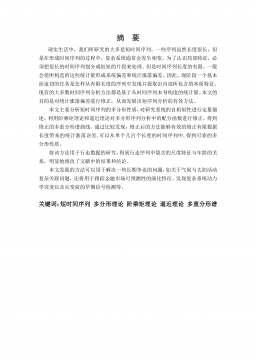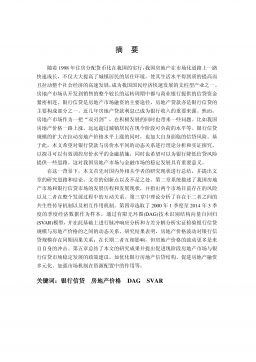毛细管循环式空调柜性能的研究
VIP免费
摘要
目前,我国处在城市建设的加速发展时期,建筑的快速发展造成的能源消
耗占总商品能耗的 20~30%,而空调能耗在建筑能耗中占有较大比例。因此,
对暖通空调设备的节能性提出更高的要求。另外,我国的低品位能源和自然资
源较为丰富,但能够直接利用低品位能源的设备较少。因此,本文设计了一种
能够利用低品位能源的空调末端装置并对其性能进行研究。
首先,本文以自然重力循环为作用原理设计了一种采用毛细管网为换热元
件的毛细管循环式空调柜并确定了结构形式、建立了理论计算模型以及对其进
行设计选型与制作。通过建立的理论模型计算出当空调柜进水流量为400kg/h、
供回水温差为3℃、空气流量为400m³/h、进风温度为26℃且当空调柜高度为
2.4m、进风口尺寸为1100
×
300mm时,出风口的面积大于0.021m2时可形成自然
循环,需要设置换热面积为10㎡的毛细管网栅。因此,空调柜的结构参数为:
高2.4m,宽1.2m,厚0.3m,内置5排规格为2000
×
1000mm的毛细管网,上下风
口为1100
×
300mm。
然后,搭建了一套空调柜实验台,在自然循环制冷(制热)模式下,实验
研究了风口尺寸等结构参数、进水温度、流量及进风温度等运行参数对空调柜
制冷(制热)性能的影响。对比研究了不同循环方式(自然循环和强制循环)
对空调柜制冷(制热)性能的影响。研究了不同供水温度下空调柜的除湿性能
及不同模式下的最优运行参数。
实验结果表明:本文设计的空调柜能够进行自然循环,验证了理论模型的
正确性;随着空调柜进出风口尺寸、进水流量及温度、进风温度及循环方式的
改变,空调柜的制冷量(制热量)、单位面积制冷量(单位面积制热量)、冷
却效率(制热效率)、风量、风速及空调柜出风温度等制冷(制热)性能都发
生变化。在自然循环时,空调柜的制冷性能及除湿性能随着水温的升高而变
差,制热性能随着供水温度的增加而变优;进水流量增加时,空调柜的制冷和
制热性能都先变好后变差,都在水流量为400kg/h时最优;进风温度变大时,空
调柜的制冷性能先变差后变好,而制热性能则逐渐变差;风口尺寸逐渐减小
时,空调柜的性能也随之变差,在风口尺寸为1100
×
300mm时最优;循环方式
改变时,空调柜在强制低档循环时要优于自然循环和强制高档循环。
另外,根据空调柜的特点及实验结果分析了其应用范围及适用面积,当空
调柜采用16℃高温冷水供冷时,制冷量、单位面积制冷量、冷却效率、风量、
风速及出风温度分别为1300W、130W/m2、0.65、353m³/h、0.3m/s、19.68℃,
可满足11m2房间的制冷需求;当空调柜采用35℃低温热水供热时,制热量、单
位面积制热量、供热效率、风量、风速及出风温度分别为1527W、153W/m2、
0.43、260m³/h、0.22m/s、25.38℃,可满足13m2房间的供暖需求;当空调柜在
供水13℃除湿时,除湿量可达0.87kg/h,可满足房间有8个人时的除湿需求。
最后,利用ansys软件对在空调柜送风方式下的两种房间模型室内气流组织
进行数值模拟。模拟结果表明:室内的速度场及温度场的最不利点出现在房间
最中间处,房间模型B的气流组织要优于模型A;当设备7℃供水时,室内温度
较低,不建议使用;当采用16℃供水时,室内温度基本可以维持在26℃,室内
空气流速也在0.1m/s左右,能够满足室内空调需求。
关键词: 热工性能 实验研究 数值模拟 毛细管循环式空调柜
ABSTRACT
Nowadays, our country is in the period of city construction development. The
proportion of energy consumption caused by rapid development of building ranges
from 20% to 30% in total energy consumption of goods and the energy consumption
caused by the air conditioning in the building energy consumption occupies a larger
proportion. Therefore, in the context of large energy consumption, it puts forward
higher requirements to energy saving of the HVAC equipments. In addition, the low
grade energy and natural resources of our country is relatively rich, but the quantity of
the equipments that can directly use low grade energy is quite few. So this article will
focus on the capillary circulation air conditioning ark that can take advantage of low
grade energy.
Firstly, based on the natural gravity circulation mechanism, the structure of the
capillary circulation air-conditioning ark had been designed and the theoretical
calculation model had been established. According to the theoretical model, when the
water inlet flow rate was 400 kg/h, the temperature difference between supply and
return water was 3 ℃, the air flow rate was 400 m³/h, the inlet air temperature was
26 ℃ and the air conditioning ark heighth was 2.4 m, the air inlet size was 1100
×
300mm, the air outlet area need to be bigger than 0.021㎡ , the capillary mesh need to
be 10㎡ at this time, the seize of tuyere above and below is 1100
×
300mm .
Secondly, An experiment platform of capillary circulation air-conditioning ark had
been built. In natural circulation cooling (heating) mode, the operation parameters
affection on performance of air conditioning ark cooling (heating), such as the size of
structural parameters, inlet water temperature, flow rate and inlet air temperature had
been studied experimentally. Comparative study of different cycle mode (natural
circulation and forced circulation) affecting the performance of air conditioning ark
cooling (heating) had been made. The dehumidifying performance of air conditioning
ark under different water supply temperature and optimal operation parameters under
different mode had been studied also.
The experimental results showed that the device can normally circulate, which
proved the correctness of the theoretical model. With the change of tuyere size ,water
flow rate and it’s temperature, inlet air temperature and the style of cycle , the cooling
(heating)capacity of the equipment also changed. For natural circulation, the
performance of cooling and dehumidification will be worse with the rising of
temperature,however, the heating performance will be better. When the water flow
rate increased, the cooling and heating performance got better before they got worse,
and the 400 kg/h of water flow was optimal. When the inlet air temperature increased,
the cooling performance of the equipment got worse before they got better,and 26 ℃
of the inlet air temperature was optimal, while the heating performance became worse
gradually. When the size reduced gradually, the performance of the equipment was
worse, and 1100
×
300mm of the tuyere size was optimal.When the type of the cycle
changed, the forced low cycle was superior than natural cycle and forced high cycle.
Moreover, analyzed its application scope and applicable area accord to its
characteristics and the experimental results. The cooling capacity, the cooling capacity
of per square meter, the cooling efficiency, air volume , air speed and the wind
temperature of the equipment respectively were 1300W, 130W/m2, 0.65, 353
m3/h ,0.3m/s, 19.68℃,while used the high temperature of frozen water (16℃). This can
meet the cooling demand of the room about 11m2. The heating capacity, the heating
capacity of per square meter, heating efficiency, air volume , air speed and the wind
temperature of the equipment respectively were 1527W, 153W/ m2, 0.43, 260 m3/h ,
0.22m/s, 25.38℃, while used the low temperature of hot water (35℃). This can meet
the heating demand of the room about 13m2. The equipment ’s capacity of
dehumidification was 0.87kg/h while the equipment was used to dehumidify and the
temperature of supply water was 13℃, which can meet the dehumidification demand
of eight people.
Finally, two kinds of model of indoor air distribution using capillary circulation
air-conditioning ark for air conditioning had been numerically simulated by Ansys
software. Simulation results showed that the most unfavorable points of indoor velocity
field and temperature field were at the middle point of models. Model B’s air
distribution was better than model A. When supply water temperature was 7℃, indoor
temperature was too low, so this was not recommended. When using 16℃ water,
basically can maintain indoor temperature at 26℃, the indoor air flow rate was around
0.1 m/s, which can meet the requirement of indoor air conditioning.
Key words: Thermal performance, Experimental study, Numerical
simulation, The capillary circulation air-conditioning ark
目 录
摘要
ABSTRACT
第一章 绪论 .................................................................................................................... 1
§1.1 课题研究背景 ...................................................................................................... 1
§1.2 国内外研究现状 .................................................................................................. 2
§1.2.1 国外研究现状 ............................................................................................... 2
§1.2.2 国内研究现状 ............................................................................................... 2
§1.3 课题研究内容及意义 .......................................................................................... 3
§1.3.1 课题研究内容 ............................................................................................... 3
§1.3.2 课题研究意义 ............................................................................................... 4
第二章 毛细管循环式空调柜的设计 ............................................................................ 5
§2.1 作用原理 .............................................................................................................. 5
§2.2 确定结构形式 ...................................................................................................... 5
§2.3 建立理论计算模型 .............................................................................................. 6
§2.4 空调柜设计选型与制作 ...................................................................................... 8
§2.4.1 运行参数的确定 ............................................................................................ 9
§2.4.2 结构参数的计算 ............................................................................................ 9
§2.4.3 主要换热元件的确定 .................................................................................... 9
§2.4.4 空调柜的制作 .............................................................................................. 10
§2.5 本章小结 ............................................................................................................ 12
第三章 毛细管循环式空调柜性能的实验研究 .......................................................... 13
§3.1 实验内容 ............................................................................................................ 13
§3.2 实验工况 ............................................................................................................ 13
§3.3 实验系统 ............................................................................................................ 15
§3.3.1 实验台设计 .................................................................................................. 15
§3.3.2 测试系统设计 .............................................................................................. 15
§3.3.3 实验辅助环境介绍 ..................................................................................... 20
§3.4 本章小结 ............................................................................................................ 21
第四章 实验结果与分析 .............................................................................................. 22
§4.1 评价指标 ............................................................................................................ 22
§4.2 自然循环制冷模式下空调柜的性能 ................................................................ 24
§4.2.1 供水温度对空调柜性能的影响 .................................................................. 24
§4.2.2 供水流量对空调柜性能的影响 .................................................................. 28
§4.2.3 进风温度对空调柜性能的影响 .................................................................. 33
§4.2.4 风口尺寸对空调柜性能的影响 .................................................................. 38
§4.3 自然循环制热模式下空调柜的性能 ................................................................ 42
§4.3.1 供水温度对空调柜性能的影响 .................................................................. 42
§4.3.2 供水流量对空调柜性能的影响 .................................................................. 45
§4.3.3 进风温度对空调柜性能的影响 .................................................................. 51
§4.4 循环方式对空调柜性能的影响 ........................................................................ 54
§4.5 空调柜除湿性能 ................................................................................................ 58
§4.6 空调柜最优运行参数 ........................................................................................ 59
§4.7 本章小结 ............................................................................................................ 61
第五章 毛细管循环式空调柜的应用研究 .................................................................. 62
§5.1 空调柜的适用场合 ............................................................................................ 62
§5.2 空调柜应用能力的算例分析 ............................................................................ 62
§5.3 空调柜送风方式下的室内气流组织的数值模拟 ............................................ 64
§5.3.1 房间模型的建立及模拟工况 ...................................................................... 64
§5.3.2 评价指标 ...................................................................................................... 65
§5.3.3 模拟结果与分析 .......................................................................................... 65
§5.4 本章小结 ............................................................................................................ 75
第六章 结论与展望 ...................................................................................................... 76
§6.1 结论 .................................................................................................................... 76
§6.2 创新点 ................................................................................................................ 78
§6.3 展望 .................................................................................................................... 78
参考文献 ........................................................................................................................ 79
在读期间公开发表的论文和承担科研项目及取得成果 ............................................ 81
致 谢 ............................................................................................................................ 82
相关推荐
-
七年级数学下册(易错30题专练)(沪教版)-第13章 相交线 平行线(原卷版)VIP免费
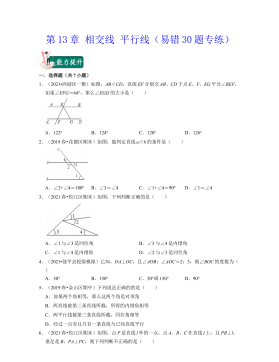
 2024-10-14 25
2024-10-14 25 -
七年级数学下册(易错30题专练)(沪教版)-第13章 相交线 平行线(解析版)VIP免费
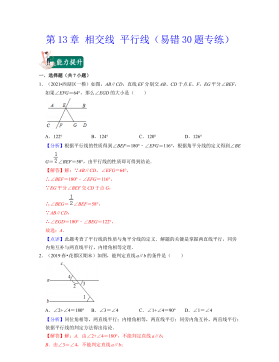
 2024-10-14 28
2024-10-14 28 -
七年级数学下册(易错30题专练)(沪教版)-第12章 实数(原卷版)VIP免费
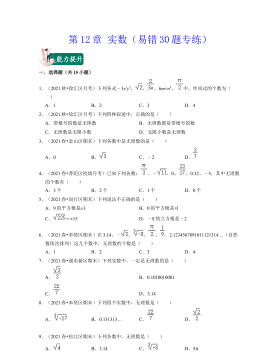
 2024-10-14 25
2024-10-14 25 -
七年级数学下册(易错30题专练)(沪教版)-第12章 实数(解析版)VIP免费
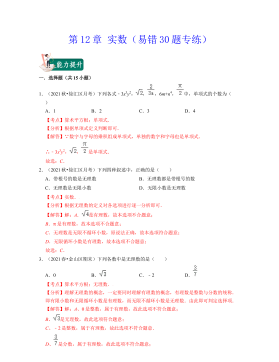
 2024-10-14 19
2024-10-14 19 -
七年级数学下册(压轴30题专练)(沪教版)-第15章平面直角坐标系(原卷版)VIP免费
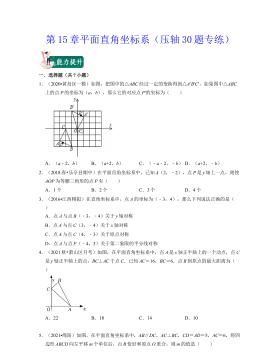
 2024-10-14 18
2024-10-14 18 -
七年级数学下册(压轴30题专练)(沪教版)-第15章平面直角坐标系(解析版)VIP免费

 2024-10-14 27
2024-10-14 27 -
七年级数学下册(压轴30题专练)(沪教版)-第14章三角形(原卷版)VIP免费

 2024-10-14 18
2024-10-14 18 -
七年级数学下册(压轴30题专练)(沪教版)-第14章三角形(解析版)VIP免费

 2024-10-14 30
2024-10-14 30 -
七年级数学下册(压轴30题专练)(沪教版)-第13章 相交线 平行线(原卷版)VIP免费
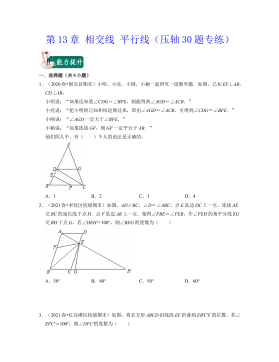
 2024-10-14 25
2024-10-14 25 -
七年级数学下册(压轴30题专练)(沪教版)-第13章 相交线 平行线(解析版)VIP免费
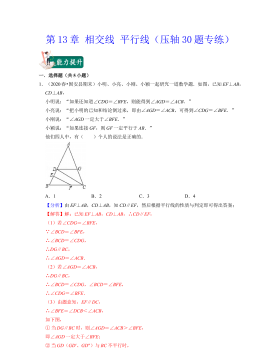
 2024-10-14 22
2024-10-14 22
作者:侯斌
分类:高等教育资料
价格:15积分
属性:86 页
大小:4.92MB
格式:PDF
时间:2025-01-09
相关内容
-

七年级数学下册(压轴30题专练)(沪教版)-第15章平面直角坐标系(原卷版)
分类:中小学教育资料
时间:2024-10-14
标签:无
格式:DOCX
价格:15 积分
-

七年级数学下册(压轴30题专练)(沪教版)-第15章平面直角坐标系(解析版)
分类:中小学教育资料
时间:2024-10-14
标签:无
格式:DOCX
价格:15 积分
-

七年级数学下册(压轴30题专练)(沪教版)-第14章三角形(原卷版)
分类:中小学教育资料
时间:2024-10-14
标签:无
格式:DOCX
价格:15 积分
-

七年级数学下册(压轴30题专练)(沪教版)-第14章三角形(解析版)
分类:中小学教育资料
时间:2024-10-14
标签:无
格式:DOCX
价格:15 积分
-

七年级数学下册(压轴30题专练)(沪教版)-第13章 相交线 平行线(原卷版)
分类:中小学教育资料
时间:2024-10-14
标签:无
格式:DOCX
价格:15 积分


